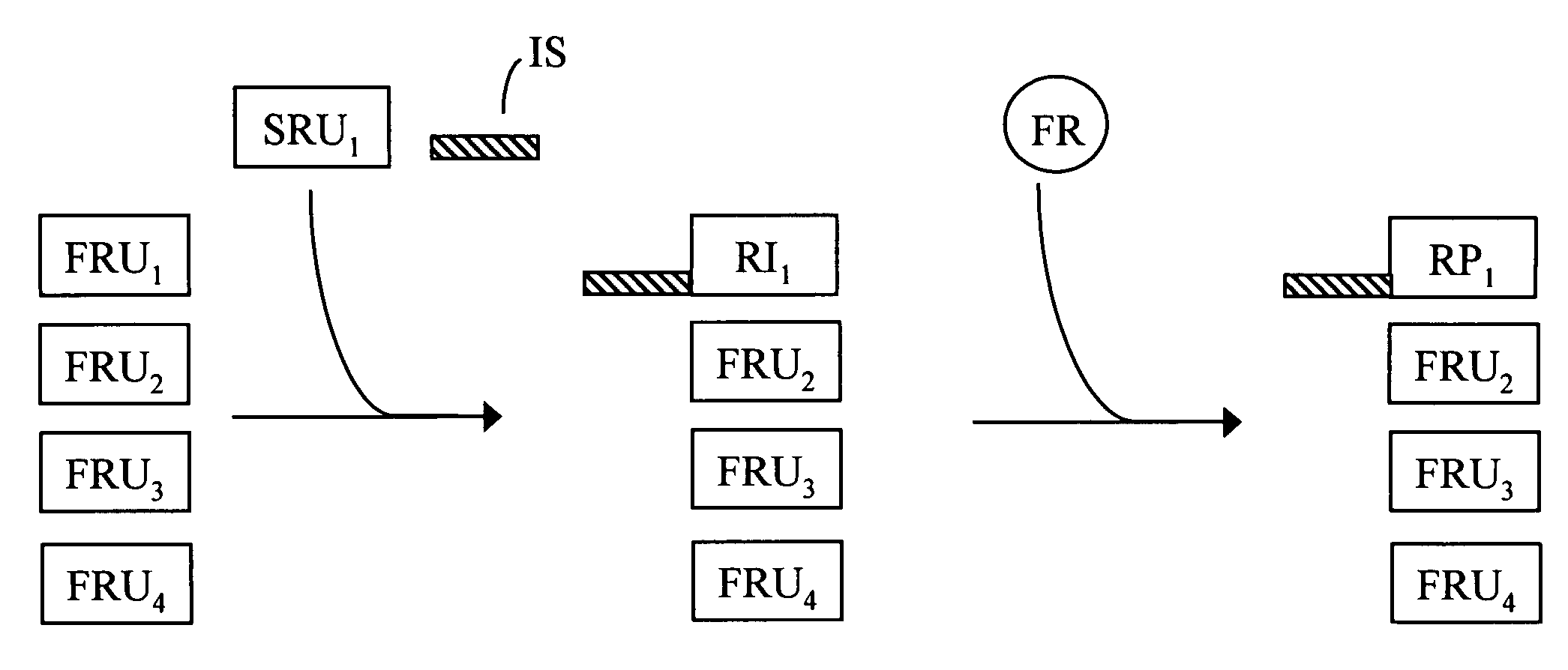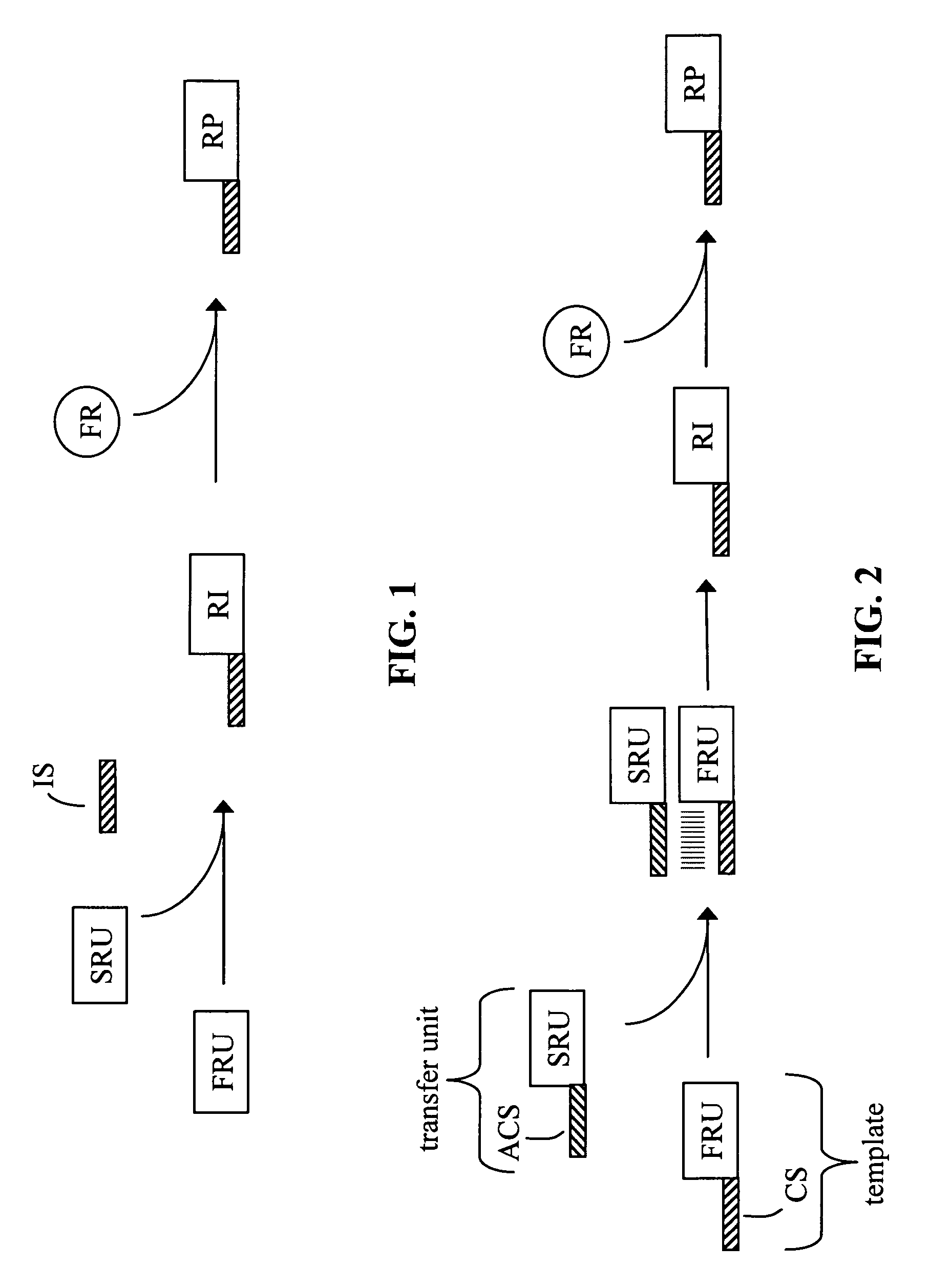Free reactant use in nucleic acid-templated synthesis
a technology of nucleic acid and reaction, applied in the field of nucleic acid-templated synthesis, can solve the problems of difficult or impossible tethering of reactants to oligonucleotides
- Summary
- Abstract
- Description
- Claims
- Application Information
AI Technical Summary
Benefits of technology
Problems solved by technology
Method used
Image
Examples
example 1
DNA-Templated Transformation of Azides into Primary Amines, Carboxylic Acids, and Thiols (Characterization by PAGE)
[0106]This example describes sequence-programmed functional group transformations where an azide can be specifically converted into an amine, a thiol, or a carboxylic acid. The individual reaction schemes and the resulting reaction yields are shown in FIGS. 5A and 5B.
[0107]I. Materials and Methods
[0108](i) Synthesis of Azido Acids
[0109]Azido substrates for the synthesis of compounds 1-12 shown in FIG. 5B were prepared from the corresponding carboxylic acid precursors as follows:
[0110]Azido Acetic Acid (Used to produce template 1 in FIG. 5B). This reagent was produced as described in Lundquist et al. (2001) ORG LETT. 3: 781. The product was found to have the following characteristics: 1H NMR (300 MHz, CDCl3) δ 3.96 (2H, s).
[0111]Azido-3-Methyl Pentanoic Acid (Used to produce template 2 in FIG. 5B). This reagent was produced as described in Lundquist et al. (2001) supra. ...
example 2
DNA-Templated Transformation of Azides into Primary Amines, Carboxylic Acids, and Thiols (Characterization by Mass Spectrometry)
[0150]This Example is similar to Example 1 except the reaction products were characterized by mass spectrometry rather than PAGE. To facilitate this a smaller template and different capture system were used under the same or similar conditions.
[0151]I. Materials and Methods
[0152](i) Synthesis of Azido Acids
[0153]The azido substrates for the synthesis of compounds 1-12 shown in FIG. 5B were prepared as described in Example 1.
[0154](ii) Preparation of Functionalized Oligonucleotides
[0155]The oligonucleotides used in this Example were prepared in a manner similar to Example 1 with the following changes.
[0156](a) Template Oligonucleotides
[0157]The template oligonucleotides were prepared as described in Example 1 except that rather than using a 30-mer template, the following 10-mer template was used: 5′-NH2(C2H4O)2—PO3H-GGT ACG AAT T-OPO3H—CH(CH2OH)CH2(OC2H4)4CH...
example 3
Transformations of Amine-Linked Templates Using Small Molecule Reagents
[0169]To further explore the ability of DNA-templated functional group transformations to enable-DNA-linked reagents to participate in sequence-programmed synthesis, four DNA (templates 13-16, FIG. 8) were prepared, each containing a different azide at the 5′ terminus, one of four unique six-base codons, and a biotin group at the 3′ terminus to facilitate template manipulation and purification. The azide-linked templates then were chemically converted into amine-linked templates by exposure to TCEP-HCl. The resulting amines then were reacted with free reagents to determine whether the conversion of the amine intermediate into a final product was possible. In particular, dansyl chloride (21), ethyl chloroformate (22), 4-methoxy phenyl isocyanate (23) and 6-morpholino pyridinyl 3-isothiocyanate (24) were all chosen amine-reactive agents as they cannot easily be attached to DNA due to their structure or their reacti...
PUM
| Property | Measurement | Unit |
|---|---|---|
| pH | aaaaa | aaaaa |
| pH | aaaaa | aaaaa |
| pH | aaaaa | aaaaa |
Abstract
Description
Claims
Application Information
 Login to View More
Login to View More - R&D
- Intellectual Property
- Life Sciences
- Materials
- Tech Scout
- Unparalleled Data Quality
- Higher Quality Content
- 60% Fewer Hallucinations
Browse by: Latest US Patents, China's latest patents, Technical Efficacy Thesaurus, Application Domain, Technology Topic, Popular Technical Reports.
© 2025 PatSnap. All rights reserved.Legal|Privacy policy|Modern Slavery Act Transparency Statement|Sitemap|About US| Contact US: help@patsnap.com



